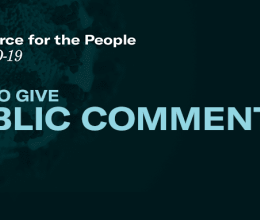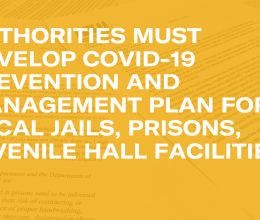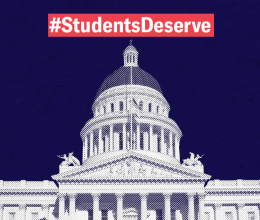As schools across California close in response to the COVID-19 outbreak, we urge them to take all measures possible to minimize the impact on their communities and, in particular, proactively support their most vulnerable and under-resourced students. When schools close, parents and guardians need to make unexpected arrangements for childcare, students will lose instructional time and school meals, and families will lose access to other essential services their schools traditionally provide. It is essential that school administrators of all types – traditional, charter, private, and alternative – find ways to maintain these services while addressing the public health concerns posed by the outbreak.
Considerations about remote instruction and learning time
Schools have proposed remote learning options for students, including providing instruction over the Internet or television stations. Schools must consider that not all students have access to these outlets and must make other arrangements for students to access the curriculum, for example by providing technology and Internet access, by providing physical instructional packets, or by allowing students to work remotely with teachers. Further, schools must ensure that particularized instruction it provides to student groups such as English learners are also incorporated into their remote learning models. Schools cannot allow students who lack resources to be further disadvantaged and fall behind.
Even if schools provide remote learning options, students will necessarily lose valuable instruction time, putting many at risk to not graduate or not satisfy other requirements. Schools must develop a plan to allow students to make up lost time and satisfy their curricular requirements, for example by providing credit recovery options or extending the school year.
Delivering school nutrition
Across California, millions of students are food-insecure and rely on school meals as an essential source of nutrition. Schools should continue providing meals to students, distributing them to families directly or allowing them to pick meals up throughout the duration of any closure. Particularly because many parents are also facing uncertainty with their jobs, now is not the time to impose additional unforeseen costs on students and families.
Continuing health and mental health services
School counselors, psychologists, social workers, and nurses provide essential health and mental health services. For many students, school-based resources represent the only access they have to these essential services. Schools should continue making these resources available to all of their students, particularly in light of the current mental health crisis and the need for medical care for students who exhibit flu-like symptoms but do not have access to other healthcare.
Providing alternative childcare
Any school closure will result in significant disruptions for working families. Parents and guardians who are already facing uncertainty in their jobs will need to find childcare alternatives. And many low-income parents and guardians who are not able to take time off, cannot work remotely, and do not have alternative caretakers will feel the impact most acutely. Schools should strive to provide childcare options for their families who need it most, including keeping certain schools and parent centers open.
Maintaining services for students with disabilities
Schools must take particular precautions to support students with disabilities. Such students must receive equal access to any remote learning alternatives schools provide to all students. For example, visually impaired students may not be able to access online classes, and schools must provide the appropriate accommodations. Further, federal law, including the Individuals with Disabilities Education Act (IDEA), requires schools to provide students with disabilities with specialized services in accordance with their Individualized Education Plans (IEPs). Such services should continue even in the event of a school closure, and, if any services are lost, schools should make up the lost services when school resumes.
Supporting students experiencing homelessness
Students experiencing homelessness, many of whom are unaccompanied minors, are likely to be impacted most acutely from the issues discussed above. They will disproportionately lack access to remote learning alternatives, to alternative meals, and reliable adult supervision during school closures. Schools should make sure to provide targeted resources to those students to make sure they are safe and supported.
Ensuring student privacy
Finally, schools must continue respecting student privacy when handling student records, including medical records. Under the Family Educational Rights and Privacy Act (FERPA), schools must receive prior written consent from parents, guardians, or students over 18 before they disclose personally identifiable student information. If a school attempts to release student records to any health or other agency under a health or safety emergency exception, it should, at a minimum, notify parents or guardians.
While we understand that schools are doing their best to balance community needs with public health concerns, we reiterate that they must prioritize supporting their most high-need students and families. We are encouraged that many school districts have already attempted to address some of these concerns, and we urge all districts to ensure that all plans are centered around equity, community, and student needs.
Sincerely,
Sylvia Torres-Guillén, Director of Education Equity, ACLU of California
Linnea Nelson, Staff Attorney, ACLU of Northern California
Victor Leung, Deputy Litigation Director, ACLU of Southern California
David Loy, Legal Director, ACLU of San Diego and Imperial Counties
Read the letter here.






